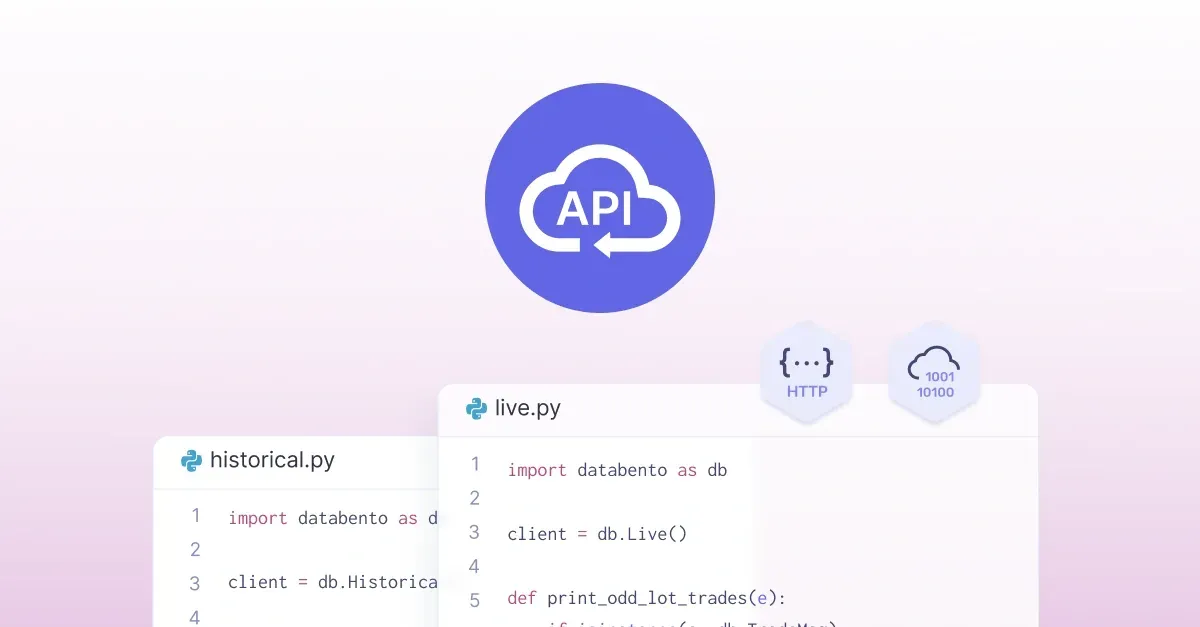Algorithmic trading guide: an overview of trading with market data APIs

The rise of application programming interfaces (APIs) has impacted the finance industry and modernized the way trading is conducted. API trading is more prevalent now due to its increased efficiency and accessibility of financial markets for various types of traders and investors. In this article, we'll cover who market data APIs are for, the benefits of trading with an API, and how to get started.
Technically, anyone who trades can benefit from using a market data API. The purpose of trading with an API is to streamline the process of buying and selling financial products, accessing market data, and customizing the trading experience to fit different needs.
Although the use of trading APIs isn't limited to a certain group of people, there are individuals and organizations that can find it especially advantageous.
Here is a list of common groups that benefit from using APIs: Institutional investors and traders Portfolio managers Researchers Quantitative analysts and developers Data engineers
Automated trading with an API allows for much faster order execution times which is particularly helpful for trading large volumes and using certain strategies such as arbitrage. Additionally, automation eliminates the emotional factors related to trading and can limit human error resulting in increased efficiency.
Market data APIs provide access to a range of data feeds from various venues in one centralized place. It enables traders to easily track multiple asset classes without dealing with different sources.
APIs can seamlessly integrate with different trading platforms, making it easy for users to incorporate within the apps and systems they already use.
Databento's market data APIs share all of the functionalities of our web portal with additional features to enhance efficiency. Trading with an API allows users to pull data directly into their own system rather than accessing through files. Our APIs offer flexibility in quickly accessing different datasets and schemas. Additionally, all schemas, datasets, and asset classes are normalized in the same way, making it simple and fast to use the same request with both live data and historical data. This replay is especially helpful for backtesting.
- Use the same API for historical and live data
- Python, C++, Rust, HTTP are supported
- Nanosecond, PTP-synchronized timestamps
- Low latency
- Intraday replay
- Tick-by-tick with full order book depth
- Complete normalization
- Access an entire venue in a single subscription or API call
- Multiple connectivity options, including internet, dedicated connectivity, and peering. You can view our locations and network connectivity guide here.
- Multiple encodings, including CSV, JSON, and our ultra-fast compressed binary format, DBN. You can learn about DBN from our GitHub or documentation.
- Multiple symbology systems, including smart symbology for futures and options, and point-in-time symbology.
To learn more about our APIs, check out our getting started guide.
